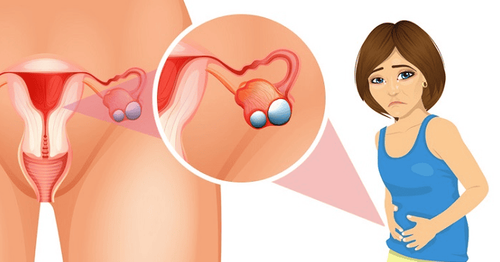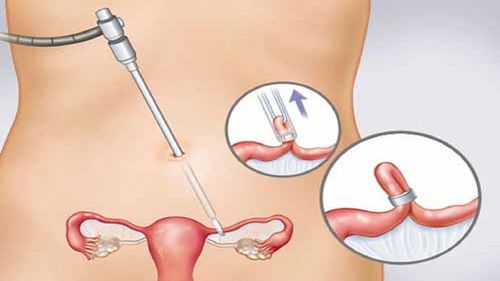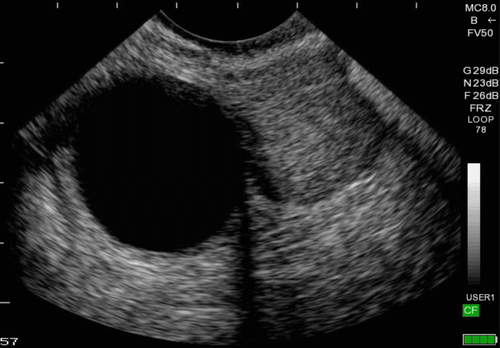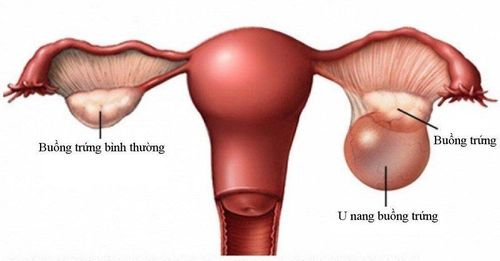This is an automatically translated article.
The article was professionally consulted by Doctor Nguyen Chi Quang, Department of Obstetrics and Gynecology - Department of Obstetrics and Gynecology - Vinmec Central Park International General Hospital. Dr. Quang has many years of profound professional experience and strength in the treatment of obstetric and gynecological diseases.Ovarian cyst is a common tumor in women, has a long dormant period, but when it turns malignant, it progresses very quickly. If not detected early, cysts can turn into ovarian cancer, affect the ability to have children, even endanger the woman's life.
1. What is an ovarian cyst?
Ovarian cyst is a type of tumor that accounts for 3.6% of gynecological diseases. The disease progresses silently, but when it turns to malignancy, it progresses very quickly. The most vulnerable period is during the reproductive years. If not detected early, cysts can lead to ovarian cancer complications, affect the ability to have children, even endanger a woman's life.Ovarian cysts can develop from the tissues of the ovaries or from tissues of other organs in the body, exist in many different forms with many different complications, in which ovarian cyst torsion is the variable form. dangerous, life-threatening condition. The disease affects people of all ages, most notably women aged 30 and older.
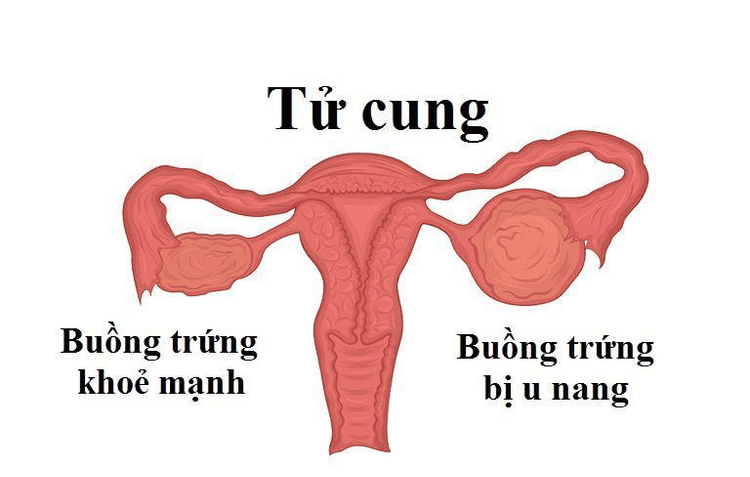
2. Evolution of ovarian cyst disease
Tumor not increasing in size: Usually rare. Tumor disappears: Usually occurs with functional tumors after 2-3 months of follow-up. The tumor is getting bigger and bigger: With the expression of the abdomen getting bigger, it may be accompanied by complications due to compression such as lower abdominal pain, urinary retention, digestive disorders, ..3. Untreated ovarian cysts can lead to ovarian cancer
Untreated cysts tend to enlarge and compress organs, causing discomfort to the patient. If left untreated for a long time, complications can occur, including ovarian cancer.Among cancers in women, ovarian cancer is among the most common and leading causes of death. Ovarian cancer can happen to anyone. Those at higher risk are often overweight, obese, or have never given birth, and are likely to have themselves or a loved one with related medical conditions.
4. Early manifestations of ovarian cancer

Lower abdominal or pelvic pain: Lower abdominal pain can be caused by cervical contractions. Often women often ignore this symptom because most of them have abdominal pain on the day of menstruation. However, if this pain occurs while you are not menstruating, it could be a sign of ovarian cancer.
Flatulence, nausea and vomiting: It is also the symptoms of specific digestive diseases. However, if you feel bloated constantly every day, you should still be wary. If you don't go to the doctor and get treatment right away, but eliminate the disease, it can make the disease grow faster and be dangerous for the patient.
Frequent urination: Urinary disorders can be caused by many diseases, including bladder problems, urinary tract problems, symptoms of high blood sugar but also symptoms of ovarian disease.
Pain during sex: Many cases feel discomfort, even pain during sex. Patients also often have an urgent need to urinate due to pressure on the pelvic region. The higher the pain level, the more advanced the ovarian cancer may be developing.
Fatigue: The body is always tired is the manifestation of the cancer cells are progressing. If you are constantly sluggish and tired even though you are not overworked, you should seek medical attention immediately.
Irregular menstrual cycle: Irregular menstrual cycle, also known as menstrual disorder, is a manifestation of many gynecological diseases, which are related to diseases in the ovaries.
5. Early detection - treatment of ovarian cysts to prevent ovarian cancer
When there are no complications, ovarian cysts often have very vague symptoms, most of which can only be detected when they happen to have an abdominal ultrasound or routine gynecological examination.Possible symptoms include:
A palpable mass on the abdomen. Stomachache. Menstrual disorders. Urinary disorders. These are common symptoms in some other diseases such as gynecological diseases (inflammation, uterine fibroids) or other tumors in the abdomen.
Periodic gynecological examination is the best way to detect ovarian tumors, timely treatment, and prevent complications, including cervical cancer. During the examination, the patient may be asked to do some tests to determine the existence of cancer cells such as some blood tests to help determine whether the tumor is benign or malignant such as blood tests. amount of Alpha Feto Protein (CA 125); Abdominal ultrasound will reveal the nature of the tumor.
When there are signs of ovarian cysts, you should go to reputable medical facilities for timely examination and treatment by an obstetrician and gynecologist, to avoid complications of ovarian cysts that affect health. reproductive.
Please dial HOTLINE for more information or register for an appointment HERE. Download MyVinmec app to make appointments faster and to manage your bookings easily.






